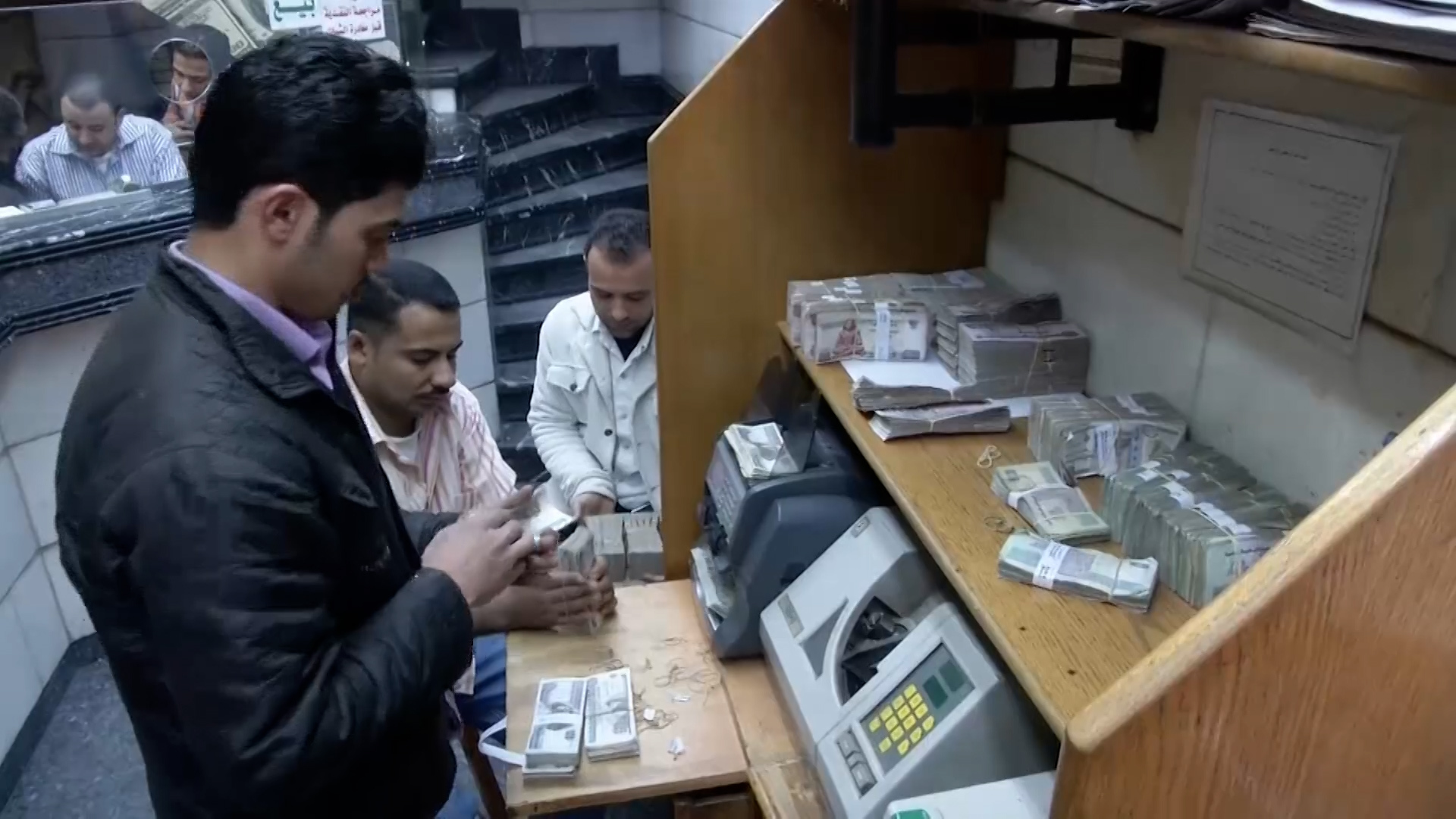The majority of Egyptians still remember the exchange rate of the US dollar in their country at 3.7 pounds at the beginning of the current millennium, and inflation rates that do not exceed 3% as an annual average.
The pound continued its gradual decline against the dollar during the subsequent years, reaching an average exchange rate of 5.5 pounds to the dollar with the emergence of the global financial crisis in 2008.
The pound continued to decline with the outbreak of the revolution of January 25, 2011, as an extension of the victory of the late President Mohamed Morsi, then the current President Abdel Fattah El-Sisi assumed the presidency of Egypt in mid-2014, at which time the exchange rate of the dollar reached 7 pounds.
In November 2016, Egypt approved a complete flotation of the exchange rate of the pound with the recovery of the parallel market, so that the official rate settled at an average of 17 pounds, then the pound rose to an average of 15.7 pounds per dollar until the beginning of 2022.
2022 developments
At the beginning of this year, the Egyptian pound was stable between 15.5 and 15.7 pounds per dollar, before the outbreak of the Russian-Ukrainian war, which exacerbated the crises of the Egyptian economy.
On February 24, 2022, the spark of war began in Eastern Europe, and with it the prices of basic commodities, such as food, energy of all kinds, and raw materials, rose, amid trade protectionism implemented by many countries that exacerbated the price hike crisis.
This was accompanied by large outflows of foreign investments in Egyptian debt instruments (bonds and bills), which resulted in the exit of foreign exchange from the Egyptian market, in parallel with the high cost of Egyptian imports from abroad within the consequences of inflation.
Egypt relies heavily on imports to provide its food needs with the export of wheat and grains, as well as fuel derivatives of all kinds, with the price of a barrel of oil rising above $100 a barrel until last August.
The statements of the Egyptian Minister of Finance, Mohamed Maait, indicate that 23 billion dollars left the Egyptian market after the Russian-Ukrainian war, in parallel with the increase in the cost of imports by 90%, from an average of 5 billion dollars per month to 9.5 billion dollars.
In March 2022, the consequences of the scarcity of foreign exchange began to appear in Egypt, which prompted the Central Bank of Egypt to move the exchange rate of the pound down to an average of 18.5 pounds per dollar, instead of an average of 15.7 pounds.
This movement was accompanied by the imposition of some restrictions on Egyptian imports from abroad, in an attempt to reduce the outflow of foreign exchange in the form of the cost of imports.
At that time, Egypt requested the help of the International Monetary Fund to enter into a new economic reform program accompanied by a financial loan of $3 billion, out of a total financing package that Egypt aims to provide from creditors amounting to $12 billion.
The pound continued its slow decline against the dollar until last October, recording a level of 19.3 pounds per dollar.
It seems that moving the exchange rate and reaching a flexible rate for the pound against the dollar was a major demand of the International Monetary Fund, which called on more than one occasion for the realization of this item.
Last October, Egypt obtained initial approval from the Fund for a $3 billion loan, to be spent in tranches for the next 46 months.
At the end of last October, Egypt implemented a new movement of the pound, bringing the exchange rate to 24.3 pounds per dollar, which is the price at which Egypt ended last year 2022.
On December 16, the Board of Directors of the International Monetary Fund formally agreed to lend Egypt $3 billion, allowing for the immediate disbursement of a tranche of $347 million.
In the first week of 2023, Egypt carried out an additional move in the price of the pound downward, bringing the exchange rate by the end of yesterday’s trading, Thursday, to 27.2 pounds, at a time when the price of the dollar in the parallel market reached 33 pounds.
It does not seem that the Central Bank of Egypt will stop moving the exchange rate, until it becomes equal to the parallel market rate, between 29 and 33 pounds per dollar.

